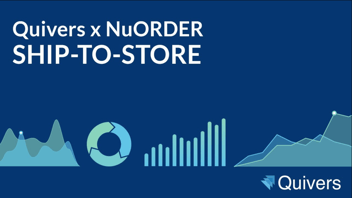The Tariff Tightrope: Navigating Global Trade Uncertainty in Wholesale and DTC
.png?width=1280&height=720&name=CEO%20CORNER%20-%20Tariff%20Tightrope%20(1).png)
Walking the Trade Tightrope Without Losing Your Balance
If you’ve ever tried walking a tightrope, you know it’s a delicate dance of balance, precision, and hoping you don’t end up flat on your face. Now imagine that tightrope is global trade, and instead of a safety net, you’ve got fluctuating tariffs, supply chain bottlenecks, and customer expectations breathing down your neck. Fun, right?
For brands navigating the wholesale and direct-to-consumer (DTC) landscape, tariffs and shifting trade policies are the unexpected gusts of wind threatening to throw everything off balance. One minute, it’s business as usual—your supply chain is humming along, your inventory is well-stocked, and your margins are intact. The next? A new tariff or trade restriction sends costs soaring, supply routes scrambling, and suddenly, that tightrope feels like it’s suspended over a pit of fire.
So, how do brands maintain stability in an unpredictable trade environment? More importantly, how do they build resilience in wholesale and DTC operations without constantly reacting to external chaos?
The short answer: flexibility, intelligence, and a fulfillment strategy that can pivot faster than a caffeinated gymnast.
How Tariffs and Trade Policies Are Reshaping Commerce
Tariffs aren’t new, but their unpredictability is a whole different beast. Whether it’s steel tariffs affecting production costs, new import taxes on consumer goods, or supply chain disruptions thanks to geopolitical tensions, brands are being forced to rethink sourcing, pricing, and fulfillment at an unprecedented rate.
- Cost Volatility: One month, you’re working with predictable material costs. The next? A 20% tariff on imported goods forces you to rethink your entire pricing strategy. Absorb the cost? Pass it to consumers? Either way, someone’s paying for it.
- Supply Chain Disruptions: A single policy shift can reroute your raw materials from Asia to Mexico, delay shipments, or make previously affordable suppliers cost-prohibitive overnight.
- Retailer and Consumer Impact: Wholesalers and retailers are feeling the pinch. Higher costs get passed down the chain, forcing retailers to rethink stocking strategies while DTC brands struggle with fluctuating consumer price expectations.
And let’s not forget the real kicker—these changes rarely come with a heads-up. Trade policies can shift overnight, and suddenly, that container of inventory sitting in a port halfway across the world is now costing you 30% more in tariffs than you budgeted for.
For brands that rely on global supply chains, bulk inventory, and lean operational models, this kind of volatility is more than an inconvenience. It’s an existential threat.
Why Distributed Order Management (DOM) Is the Key to Survival
When uncertainty is the only certainty, the best strategy isn’t predicting the future—it’s preparing for it.
This is where Distributed Order Management (DOM) steps in as the air traffic controller of modern fulfillment—helping brands stay agile, adjust sourcing on the fly, and optimize fulfillment in response to shifting trade conditions.
Think of DOM as the brain of your supply chain—a system that automatically determines the most cost-effective, efficient way to fulfill orders across multiple locations, whether it’s a warehouse in New Jersey, a retail store in Los Angeles, or a third-party fulfillment center in Canada.
When tariffs spike or certain import routes become cost-prohibitive, a strong DOM strategy can immediately reroute fulfillment to alternative locations, ensuring that brands aren’t stuck absorbing massive cost hikes or delaying shipments.
Here’s how DOM helps businesses thrive in tariff-induced chaos:
- Cost-Aware Fulfillment: Automatically prioritizes fulfillment locations that minimize duties and shipping costs.
- Dynamic Sourcing: Helps brands pivot between international and domestic suppliers based on real-time tariff implications.
- Retailer-Fulfilled Orders: When importing becomes too costly, brands can tap into retailer or distributor inventory for fulfillment, reducing reliance on volatile international shipping.
- Real-Time Pricing Adjustments: Enables brands to adjust retail pricing or B2B wholesale strategies based on current tariff realities.
In short, DOM ensures that when the trade winds shift, your fulfillment strategy shifts with it.
Balancing Global Sourcing With Localized Fulfillment
If the past few years have taught us anything, it’s that putting all your eggs in one supply chain basket is a recipe for disaster.
Brands looking to reduce tariff exposure and increase fulfillment flexibility should focus on a hybrid sourcing strategy—a mix of global suppliers for cost efficiency and local fulfillment options for agility.
- Diversify Supplier Networks: Work with multiple suppliers across different regions so a tariff spike in one country doesn’t derail your entire operation.
- Leverage Nearshoring: Consider sourcing closer to home (Mexico, Canada, or even U.S.-based manufacturing) to reduce dependence on volatile overseas tariffs.
- Optimize Inventory Allocation: Store inventory across multiple fulfillment nodes (warehouses, retailers, 3PLs) so you’re not reliant on a single distribution hub.
- Use Retail as a Fulfillment Hub: Rather than shipping everything from a centralized warehouse, fulfill online orders from local retail stores to reduce import costs and improve delivery times.
A smart, flexible fulfillment strategy ensures that whether tariffs go up, supply chains get disrupted, or geopolitical tensions spike, your ability to fulfill orders and maintain margins remains intact.
Final Thoughts: The Future Belongs to the Agile
The reality of modern commerce is this: tariffs, trade wars, and supply chain disruptions aren’t going anywhere. What can change is how brands respond.
Those who cling to rigid, outdated supply chain models will suffer—locked into costly tariffs, long shipping delays, and fulfillment headaches. Those who embrace agility, data-driven fulfillment, and a diversified sourcing strategy will not only survive but gain a competitive edge in an era of uncertainty.
So, if you’re still managing wholesale and DTC fulfillment like it’s 2010, it might be time to rethink your strategy. The brands that win won’t be the ones that fight the storm—they’ll be the ones that learn to sail through it.
Oh, and if you’re looking for a better way to manage fulfillment in a world of trade uncertainty, well… let’s just say I know a platform that can help. 😉


.png?width=352&name=CEO%20Corner%20--%20Unified%20Commerce%20(2).png)